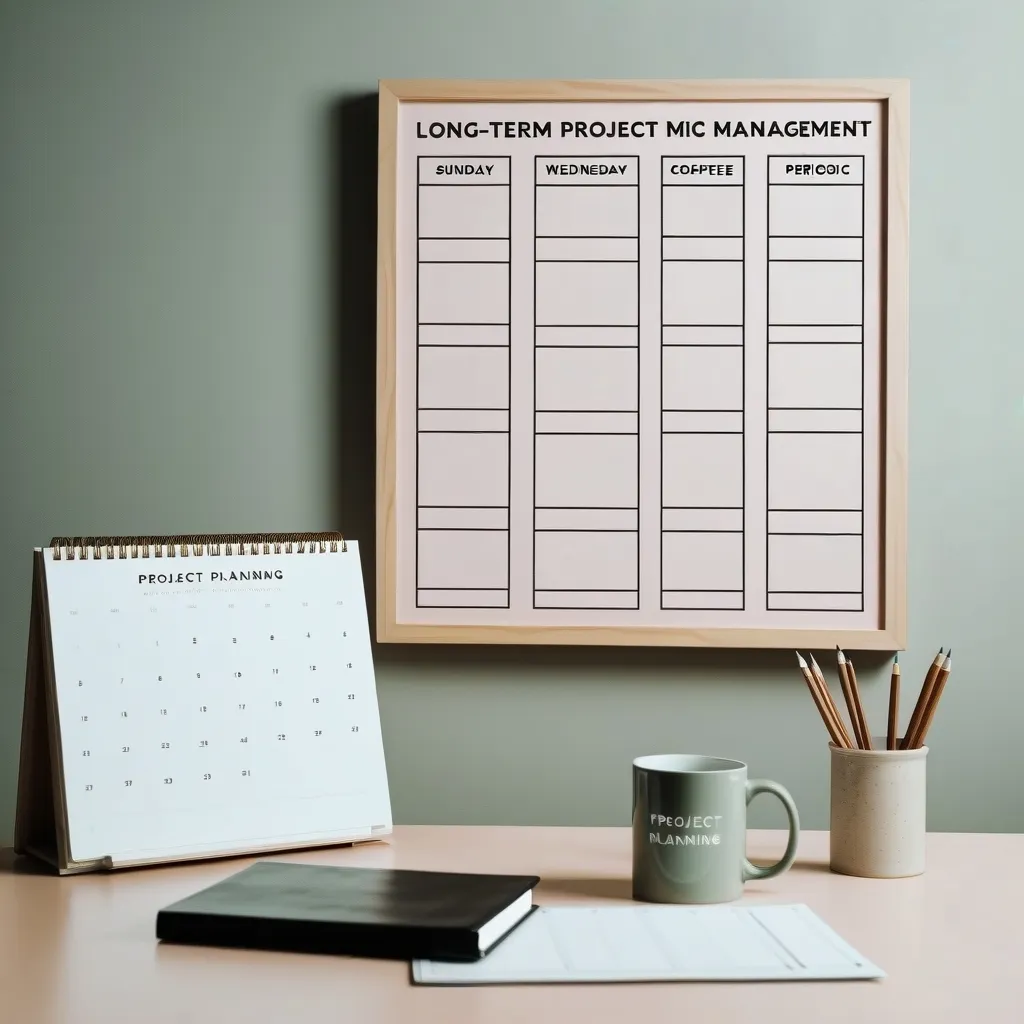Managing long-term projects can be a real headache, right? It’s like trying to juggle a dozen balls while riding a unicycle - on a tightrope. But don’t worry, I’ve got a secret weapon for you: periodic reviews. Trust me, this technique is a game-changer when it comes to keeping your projects on track and your sanity intact.
Let’s dive into what periodic reviews are all about. Think of them as regular pit stops on your project journey. You pull over, check your map, make sure you’re heading in the right direction, and maybe even change a tire or two if needed. It’s all about taking a step back, assessing where you’re at, and making sure you’re still on the right path.
Now, I know what you’re thinking - “Great, another thing to add to my already overflowing to-do list.” But hear me out. Periodic reviews are like your project’s health check-ups. They help you catch potential issues before they turn into full-blown disasters. And let’s face it, we’ve all had those “oh crap” moments when a small problem suddenly explodes into a major crisis. Periodic reviews are your safety net against those heart-stopping moments.
Let’s say you’re planning a wedding. (If you’ve ever been involved in wedding planning, you’re probably breaking out in a cold sweat just thinking about it.) You’ve got a year to pull off the event of the century. Without periodic reviews, you might find yourself a week before the big day realizing you forgot to book a photographer or order the cake. Yikes! But with regular check-ins every few months, you can make sure everything from the venue to the napkin colors is on track.
So, how do you set up these magical reviews? First things first, you need to break your project down into phases. Think of it like chapters in a book. Each phase should have its own set of goals and deadlines. For a house construction project, you might have phases like planning, foundation laying, framing, and so on. At the end of each phase, you do your review. It’s like finishing a chapter and making sure you understood everything before moving on to the next one.
Now, let’s talk about the secret sauce of periodic reviews: time estimation. This is where things get a bit nerdy, but stick with me. There’s this cool tool called PERT (Program Evaluation and Review Technique). It sounds fancy, but it’s actually pretty simple. You estimate the time for each task using three scenarios: best case, worst case, and most likely case. It’s like planning a road trip - you estimate how long it’ll take if traffic is perfect, if you hit every red light, and what’s most likely to happen.
Let’s go back to our wedding example. Say you’re planning the catering. Your best-case scenario might be two weeks to finalize everything. Worst case? Maybe four weeks if the caterer is swamped or you can’t decide between chicken or fish. Most likely? Probably around three weeks. By considering all these scenarios, you can plan more realistically and avoid those “How did we get so behind?” moments.
Now, here’s where things get a bit tricky - dependencies. In any long-term project, you’ve got tasks that depend on other tasks being finished first. It’s like dominos - you can’t knock down the second one until the first one falls. Periodic reviews help you keep track of these dependencies. In a software project, for example, you can’t start testing until the coding is done. During your review, you check if coding is on track. If it’s running late, you know you need to adjust your testing timeline.
But here’s the thing about long-term projects - they’re like trying to predict the weather a year in advance. Things change. Maybe your client suddenly wants a completely different design, or your key team member wins the lottery and quits. (Hey, it could happen!) This is where periodic reviews really shine. They give you regular opportunities to adjust your plan based on these changes. It’s like having a GPS that recalculates your route when you take a wrong turn.
And let’s not forget about the human element. Periodic reviews are great for keeping your team motivated and on the same page. It’s easy for team members to feel lost or disconnected in a long-term project. Regular check-ins give everyone a chance to share their progress, voice concerns, and celebrate wins. It’s like a team huddle in a long game - it keeps everyone focused and energized.
Now, I know some of you are probably thinking, “This all sounds great, but how do I actually do this?” Don’t worry, I’ve got you covered. There are tons of tools out there to help with periodic reviews. Project management software can help you track progress and set reminders for reviews. Gantt charts and PERT charts can give you a visual representation of your timeline and dependencies. And if you really want to get fancy, you can use the Critical Path Method (CPM) to identify the most crucial tasks in your project.
Let’s look at some real-life examples to see how this works in practice. Imagine you’re building a new office complex. Your periodic reviews might involve checking on the progress of excavation, foundation laying, and construction. If you find out during a review that the excavation is taking longer than expected due to unexpected rock formations, you can adjust your timeline and maybe bring in some extra equipment to catch up.
Or let’s say you’re developing a new app. Your reviews might focus on the progress of coding, testing, and deployment. If your testing phase uncovers more bugs than anticipated, your review would help you prioritize which bugs to fix first and whether you need to push back your release date.
Planning a music festival? Your reviews could cover venue booking, performer scheduling, and marketing efforts. If a headline act suddenly cancels, your review gives you the chance to find a replacement and adjust your marketing strategy accordingly.
The bottom line is this: long-term projects are like marathons, not sprints. You need to pace yourself, stay hydrated (with coffee, obviously), and regularly check your progress. Periodic reviews are your secret weapon for staying on track, adapting to changes, and ultimately crossing that finish line with your sanity intact.
So, next time you’re staring down the barrel of a long-term project, don’t panic. Break it down into phases, schedule your reviews, and get ready to conquer that project like a boss. With periodic reviews in your toolkit, you’ll be amazed at how much smoother your projects run. And hey, you might even start to enjoy the process. Well, maybe enjoy is a strong word. Let’s say you’ll hate it less. Baby steps, right?
Remember, Rome wasn’t built in a day, but I bet they used periodic reviews to make sure it got built eventually. So go forth, review periodically, and may your projects be ever in your favor!






